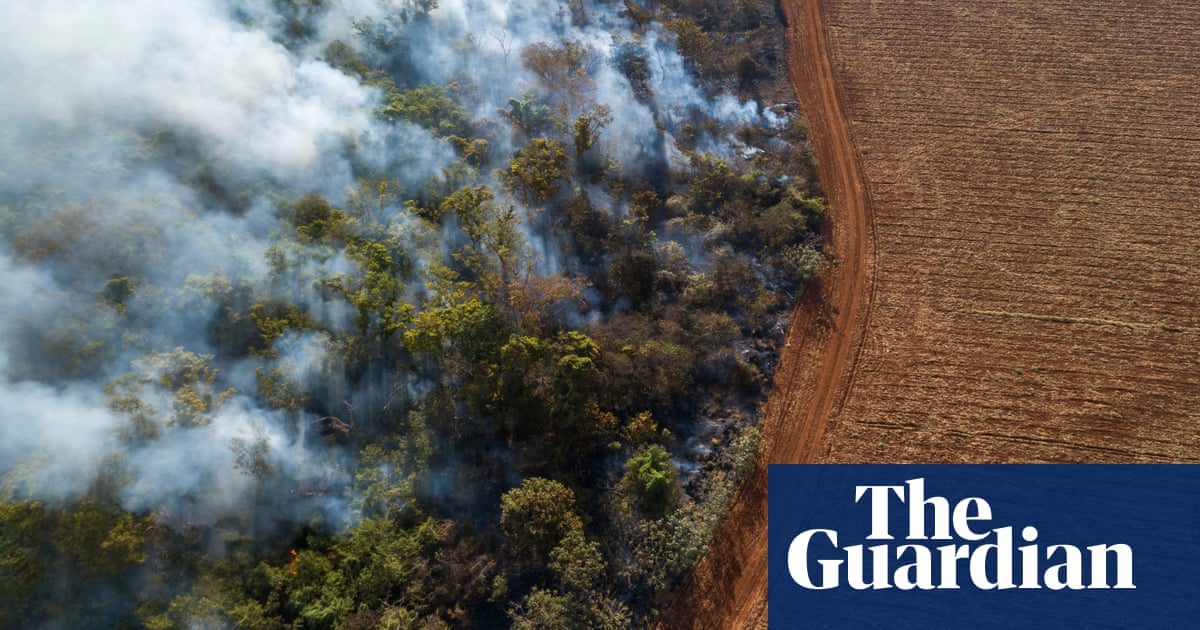
The results of a recent study on the Brazilian Amazon reveal that deforestation has a significantly larger effect on local temperatures than previously thought. The study also highlights that protecting forests would greatly benefit agricultural businesses.
The findings have significant political ramifications as farmers in Amazonian regions have traditionally been the main drivers of deforestation, believing that clearing more land will lead to greater profits.
The latest study sheds light on the opposing perspective. It reveals that the farming hub of Mato Grosso, which is currently experiencing drought and extreme temperatures, would see an increase of just over 0.5 degrees Celsius by 2050 if deforestation continued at its current rapid pace.
On Monday, a research article was released in the Proceedings of the National Academy of Sciences showing that deforestation in the Amazon can cause warming up to 60 miles (100km) away. The more trees that are cleared, the warmer the temperature becomes. This also adds to the overall impact of global heating on the environment.
According to Dominick Spracklen from the University of Leeds, the typical tree has a cooling impact that is comparable to two to three 2.5kW air conditioners operating at maximum capacity 24 hours a day. This is accomplished through evapotranspiration, which is similar to the perspiration produced by humans to regulate body temperature. He also noted that this effect extends further than previously thought.
The speaker expressed surprise at the magnitude of the situation, stating that they had suspected it for some time. They also emphasized the positive impact of forests on their surrounding areas, such as providing cooler air and increased rainfall for farmers. The hope is that quantifying these benefits will convince a larger group of people to preserve forested areas.
Recent peer-reviewed research has highlighted the crucial role of the Amazon in maintaining a stable climate in its region. One study, published earlier this year, revealed that deforestation in the Amazon can lead to decreased rainfall up to 125 miles away. A larger-scale study further confirmed the connection between the Amazon and the South American monsoon, warning that ongoing deforestation could result in a 30% reduction in regional precipitation, posing a serious threat to food production.
Previous research on the consequences of deforestation on temperature has focused on the immediate effects, showing a direct connection between tree loss and higher temperatures in the specific location where the trees were removed. However, a recent study expanded upon this by examining if there is a broader warming effect. Utilizing satellite data and machine learning, the researchers discovered a 0.7 degree Celsius rise in temperature for every 10% decrease in forest cover within a 60-mile radius.
Move beyond the advertisement for the newsletter.
after newsletter promotion
In regions where there has been significant deforestation, the effects are significant. The study concludes that deforestation in these areas leads to a more than fourfold increase in warming, which has severe implications for both the remaining Amazon rainforest and the communities that depend on it.
The main author, Ed Butt, stated that this should not be viewed as a warning, but rather as a helpful tool to encourage sustainable forest management. “If we can decrease deforestation, we can prevent a significant amount of regional warming. I see this as a great opportunity. It highlights the major advantage of reducing deforestation for local farmers… The key point is that states like Mato Grosso have the ability to choose different paths for their future. This gives control back to regions and states. They have the potential to greatly reduce their exposure to warming.”
Source: theguardian.com


